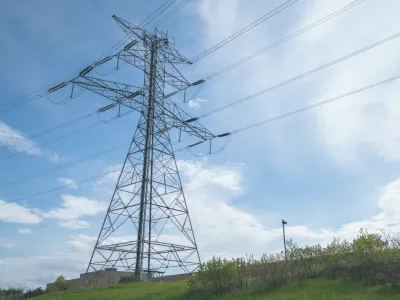Constructing the Future of Energy: MISO approves new transmission portfolio

The Midcontinent Independent System Operator (MISO) just approved a series of transmission projects referred to as “Tranche 2.1.” This decision lays the groundwork for one of the largest regional buildouts of long-range transmission lines ever contemplated. The projects, which span across the Midwest, will create jobs, deliver cost savings to customers, and increase reliability in the face of ever-increasing grid challenges. Below, we provide an overview of Tranche 2.1 and what approval means for Minnesotans.
What is Tranche 2.1?
Tranche 2.1 is the second stage of a long-range transmission plan developed by MISO. As a system operator, MISO is charged with ensuring electricity is reliably and affordably delivered across 15 states and Manitoba. This requires identifying the current and future infrastructure needs of the electric grid and planning for upgrades necessary to keep the lights on. In 2022, MISO approved “Tranche 1,” consisting of 18 transmission lines across the Midwest, including four in Minnesota. Tranche 2.1 is the next step in modernizing the transmission system to address the changing energy needs across MISO’s footprint.
Tranche 2.1 is comprised of 24 transmission lines which cross the same Midwest region as Tranche 1. Many of the new projects are rated at 765 kilovolts (kV) and can carry more energy than other transmission lines with lower voltages. This means less transmission lines will need to be built to continue providing reliable electricity.
Why did MISO grant approval?
Tranche 2.1 is expensive, coming in at an estimated cost of $21.8 billion. These costs will be spread out amongst utility customers in the Midwest region. Despite these high costs, MISO approved the proposal because the benefits expected from the transmission expansion far outweigh the investment expense.
What are the benefits of these new transmission lines?
Given the major price tag associated with Tranche 2.1, it is important to understand why the transmission projects are seen as necessary, and what benefits customers can expect from the investment. At a high level, Tranche 2.1 will form a backbone for the future transmission system and enable electricity to be reliably and cost-effectively transported from where it is produced to where it is needed. In analyzing these projects, MISO quantified expected reliability and energy savings benefits of up to $118 billion dollars.
What does this mean for Minnesota?
Several of the Tranche 2.1 transmission lines converge around Rochester, with others planned for the northern and southwestern portions of the state. Together, these Minnesota-based projects are expected to result in an investment of $4.3 billion, create over 4,300 direct jobs, and generate an economic output of up to $4.8 billion. Once built, the transmission projects will enable new renewable energy resources to come online, further supporting job creation through the construction and operation of those facilities.
At the same time, the projects will help strengthen the grid against extreme weather impacts, reduce exposure to high fuel costs, and solve reliability and congestion issues that could otherwise prevent electricity from being delivered to customers at reasonable costs.
What is the timeline for review?
Now that Tranche 2.1 has been approved by MISO, utilities and transmission owners across the Midwest will file petitions before their respective regulatory authorities. In Minnesota, the Public Utilities Commission oversees transmission projects and must determine whether the individual lines are needed and how they should be routed. As petitions are filed, regulatory timelines will be established to ensure stakeholders, agencies, and the public have enough time to review the proposals and provide feedback. Construction of the transmission lines will occur after approval has been granted. Absent any delays, these projects are expected to come online between 2032 and 2034.
How can I share my perspective?
At this point in time, individual project proposals have not yet been submitted. After these projects are developed and filed, those interested in sharing their perspectives can do so by contacting the Public Utilities Commission or submitting a comment online.